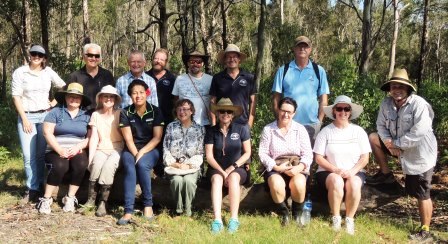Some of the key points coming from the workshop included:
Habitat loss in SEQ:
Staff members at the Queensland Herbarium are mapping the Moreton Bay and South East Queensland Region including 54535 hectares of coastal habitat. In terms of saltmarsh there has been a 64% loss in area since the 1950’s. The major sources of loss include the airport, ports and infrastructure. Emphasising the dynamic nature of our coastal habitats Mangroves actually gained 927 hectares whereas we lost 5549 hectares of Saltmarsh and 784 hectares of Casuarina. The full results will be published in March 2016.
Threats to Saltmarsh:
- Fire
- Vehicle access
- Mosquito management
- Mangrove encroachment.
- Climate change – sea level rise, change in temperature and rainfall
- Pollution and littering
- Grazing – marine couch is prime grazing, and important during drought conditions. Historical fire regimes were raised for grazing. Since the 1990’s the fire frequency has decreased significantly, resulting in a thickening of marine couch.
- Development pressure – direct replacement / encroaching development altering hydrology
- Altered hydrology – roads, access tracks etc
- Recreation – including golf courses
- Feral animals
- Access into saltmarsh areas – protecting from degradation due to vehicle access for maintenance of infrastructure (e.g. utility maintenance, powerlines etc.)
- QLD Government regulations indicate that urban areas do not require an offset – how are urban areas defined? Where are they located?
- Lack of community awareness and value – contributing to all of the above.
REF Inc has been a key community contributor to Saltmarsh ecology and community science. You can find out more about saltmarsh by logging onto http://saltmarsh.enviroed.com.au/ or our Pinterest site https://www.pinterest.com/0im2n485uy67n4m/saltmarsh/
You can also check out this Saltmarsh Video on Youtube.
In the near future we will be publishing an article on saltmarsh in the special features of this blog.


 RSS Feed
RSS Feed
